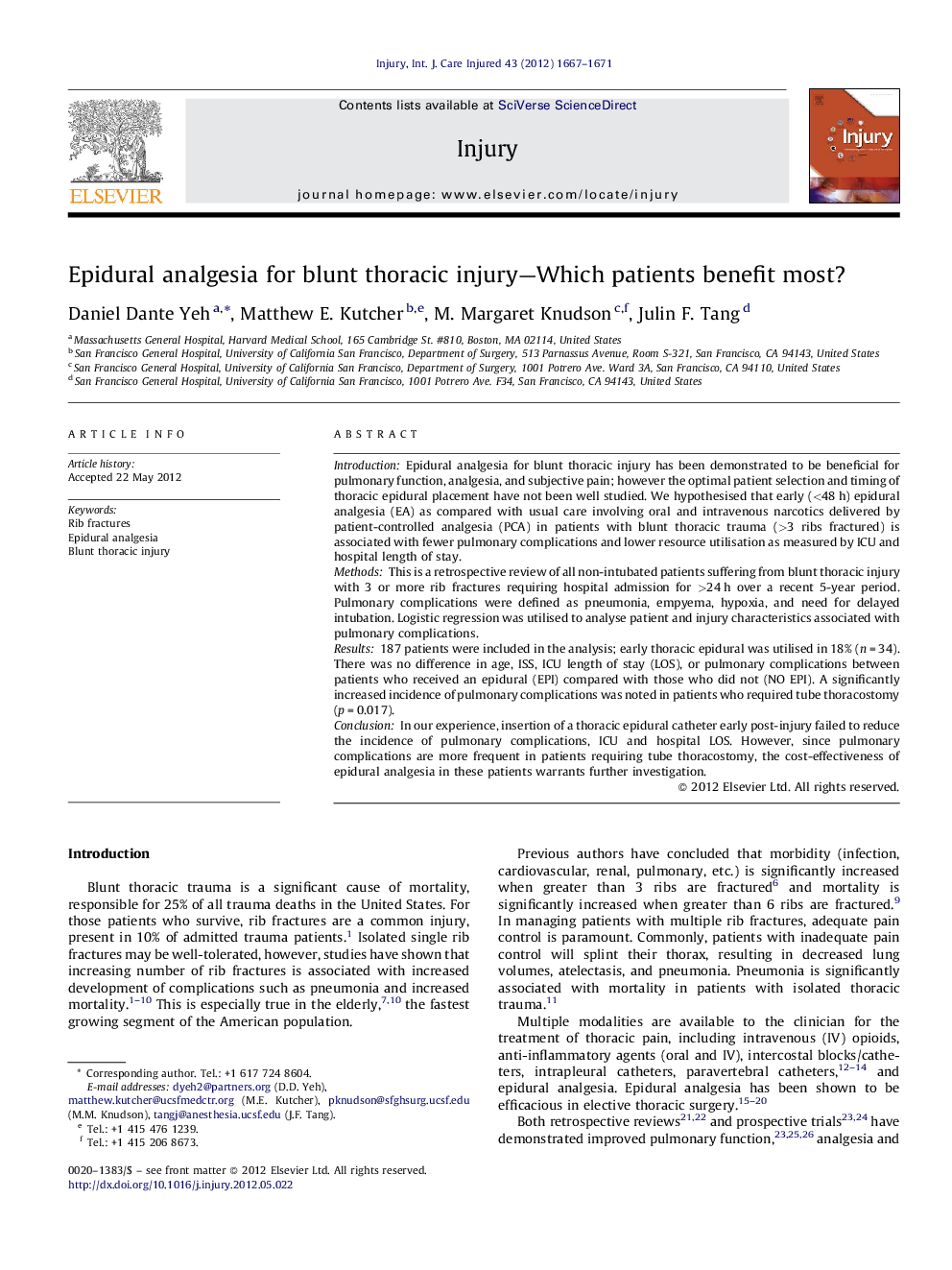| Article ID | Journal | Published Year | Pages | File Type |
|---|---|---|---|---|
| 3240314 | Injury | 2012 | 5 Pages |
IntroductionEpidural analgesia for blunt thoracic injury has been demonstrated to be beneficial for pulmonary function, analgesia, and subjective pain; however the optimal patient selection and timing of thoracic epidural placement have not been well studied. We hypothesised that early (<48 h) epidural analgesia (EA) as compared with usual care involving oral and intravenous narcotics delivered by patient-controlled analgesia (PCA) in patients with blunt thoracic trauma (>3 ribs fractured) is associated with fewer pulmonary complications and lower resource utilisation as measured by ICU and hospital length of stay.MethodsThis is a retrospective review of all non-intubated patients suffering from blunt thoracic injury with 3 or more rib fractures requiring hospital admission for >24 h over a recent 5-year period. Pulmonary complications were defined as pneumonia, empyema, hypoxia, and need for delayed intubation. Logistic regression was utilised to analyse patient and injury characteristics associated with pulmonary complications.Results187 patients were included in the analysis; early thoracic epidural was utilised in 18% (n = 34). There was no difference in age, ISS, ICU length of stay (LOS), or pulmonary complications between patients who received an epidural (EPI) compared with those who did not (NO EPI). A significantly increased incidence of pulmonary complications was noted in patients who required tube thoracostomy (p = 0.017).ConclusionIn our experience, insertion of a thoracic epidural catheter early post-injury failed to reduce the incidence of pulmonary complications, ICU and hospital LOS. However, since pulmonary complications are more frequent in patients requiring tube thoracostomy, the cost-effectiveness of epidural analgesia in these patients warrants further investigation.
